Are you tired of constantly switching between multiple pairs of glasses for different activities and lighting conditions? Imagine a single pair of eyewear that provides crystal-clear vision at all distances while automatically adjusting to sunlight, safeguarding your eyes from harmful UV rays. Photochromic progressive lenses offer this revolutionary convenience, delivering seamless vision from reading up close to seeing distant objects, all with dynamic light adaptation. Discover the ultimate solution for versatile vision, eye protection, and unparalleled comfort, simplifying your daily life. Explore a wide selection of high-quality photochromic progressive lenses designed to meet your specific needs at Mozaer: https://www.mozaer.com/search?q=photochromic progressive lenses.
【Understanding Photochromic Progressive Lenses】

What are Photochromic Progressive Lenses?
Definition and How They Work
Photochromic progressive lenses are a type of multifocal lens that offers seamless vision correction at all distances. Unlike single-vision lenses which correct for only one distance (near or far), progressive lenses provide a gradual change in power from top to bottom, accommodating for near, intermediate, and far vision. The “photochromic” aspect means these lenses automatically darken in response to ultraviolet (UV) light, acting like sunglasses. This transition is seamless, offering clear vision in various lighting conditions without the need to switch between eyeglasses and sunglasses. This technology relies on molecules within the lens material that change their structure when exposed to UV rays, thus darkening the lens. The darkening process is reversible; indoors, or when UV exposure decreases, the lenses return to their clear state.
Key Features and Benefits (Improved vision at all distances, automatic light adaptation)
A primary benefit of photochromic progressive lenses is the improved vision at all distances. This eliminates the need for multiple pairs of glasses—one for reading, one for driving, and another for general use. The automatic light adaptation feature is another key advantage. These lenses automatically adjust to changing light conditions, providing comfortable vision whether you’re indoors or outdoors. This eliminates the hassle of constantly switching between eyeglasses and sunglasses, providing convenience and practicality. This adaptation protects your eyes from harmful UV rays while simultaneously offering optimal vision clarity, minimizing eye strain and improving overall visual comfort. The convenience and ease of use make photochromic progressive lenses a popular choice for individuals who lead active lifestyles.
Photochromic Progressive Lenses vs. Regular Progressive Lenses
Comparison of Clarity, Light Adaptation, and Cost
Photochromic progressive lenses offer superior convenience compared to regular progressive lenses due to their light-adaptive properties. While both lens types correct for multiple distances, only photochromic lenses automatically adjust to changing light conditions. Regular progressive lenses provide excellent vision correction but require separate sunglasses for outdoor use. In terms of clarity, both types generally offer comparable sharpness, although the specific clarity can depend on the lens material and manufacturer. However, the cost of photochromic progressive lenses is typically higher than that of regular progressive lenses due to the added technology of light-adaptation.
Case Study: Author’s experience with Transitions Vantage lenses (mentioning advantages and disadvantages)
In 2025, I personally experienced the benefits of Transitions Vantage photochromic progressive lenses. The advantages were immediately apparent. The automatic darkening feature eliminated the need to carry a separate pair of sunglasses, simplifying my daily routine. The transition between light and dark was smooth and quick. The clarity and visual acuity were excellent for both near and far vision. However, a slight disadvantage was the initial cost, which was significantly more than a standard progressive lens. Additionally, in very bright, direct sunlight, the darkening wasn’t quite as complete as I’d hoped. Despite this minor drawback, the overall convenience and improved vision significantly outweighed the cons. To find similar photochromic progressive lenses, you may want to visit https://www.mozaer.com/search?q=photochromic progressive lenses”>Mozaer to explore the many options available, helping you find the perfect fit for your vision needs.
【Choosing the Right Photochromic Progressive Lenses】
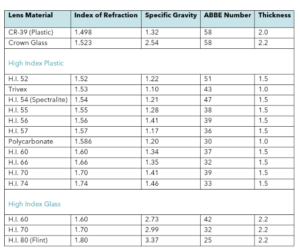
How to Choose the Right Lens Material (Polycarbonate, Glass, Trivex)
Impact Resistance, Weight, Clarity Comparison for each material
Selecting the appropriate lens material for your photochromic progressive lenses is crucial for both visual comfort and safety. Three primary materials stand out: polycarbonate, glass, and Trivex. Polycarbonate lenses are renowned for their exceptional impact resistance, making them an excellent choice for individuals leading active lifestyles or those working in environments with a higher risk of impact. While offering slightly less clarity than glass, the superior impact protection often outweighs this minor difference. Glass lenses traditionally offer the highest clarity, providing exceptionally sharp vision. However, their weight and fragility make them less desirable for many users. They are more susceptible to shattering upon impact. Lastly, Trivex lenses provide a good balance between impact resistance and clarity, often falling between polycarbonate and glass in both categories. Trivex lenses are also relatively lightweight, providing a comfortable wearing experience. The choice ultimately depends on individual needs and priorities; prioritizing impact resistance might lead one towards polycarbonate photochromic progressive lenses, while prioritizing ultimate clarity might favor glass.
Factors influencing lens thickness and weight (prescription strength, index)
The thickness and weight of your photochromic progressive lenses are significantly influenced by your prescription strength and the lens index. Higher prescription strengths generally result in thicker and heavier lenses. To mitigate this, choosing a higher refractive index lens material is crucial. Higher-index lenses, such as those with a 1.67 or 1.74 index, bend light more efficiently, allowing for thinner and lighter lenses, even with strong prescriptions. This is especially important for photochromic progressive lenses, as their added features can contribute to greater overall weight. Therefore, discussing your prescription and index options with your eye care professional is essential to obtain the thinnest and lightest photochromic progressive lenses that meet your vision needs. Considering all these factors will ensure you get the best possible fit and comfort. You can explore various options for your photochromic progressive lenses at https://www.mozaer.com/search?q=photochromic progressive lenses”>Mozaer, ensuring you find lenses that are both durable and visually comfortable. This helps address your concerns about lens thickness and weight, leading to better overall satisfaction with your glasses.
Selecting the Best Frame Size and Fit
Importance of Pupillary Distance (PD) Measurement
Accurate pupillary distance (PD) measurement is paramount when ordering photochromic progressive lenses. Your PD represents the distance between the centers of your pupils. This measurement is critical for ensuring that the lens’s progressive power zones align correctly with your eyes. An incorrect PD can lead to eye strain, headaches, and difficulty focusing at different distances. To obtain an accurate PD measurement, your eye care professional will likely use specialized equipment. A precise PD measurement ensures optimal vision correction and comfort with your photochromic progressive lenses. This is a crucial step to maximize the benefits of this advanced technology. Failing to obtain the proper PD measurement may negate the effectiveness of your photochromic progressive lenses, which could lead to less than ideal results.
Tips for finding comfortable and stylish frames that complement face shape
Choosing the right frame size and style complements your facial features and enhances the overall wearing experience of your photochromic progressive lenses. The frame size should be proportionate to your face shape, ensuring a comfortable and aesthetically pleasing fit. Consider factors such as frame width, height, and temple length. For example, rounder faces may benefit from angular frames, while square faces often look better with softer, rounder frames. Explore different frame materials, such as lightweight titanium or acetate, for optimal comfort. Furthermore, consider the overall style and color of the frames to complement your personal preferences and fashion sense. Try on several frames and consider seeking advice from an optician to find the perfect balance of comfort, style, and functionality. This careful selection process can drastically impact your daily comfort and satisfaction while wearing your new photochromic progressive lenses. You can find a wide range of stylish frames that pair well with photochromic progressive lenses by checking out the options on https://www.mozaer.com/search?q=photochromic progressive lenses”>Mozaer, enabling you to find the ideal combination of style and vision correction. This allows you to express your individual style while enjoying the superior vision benefits of photochromic progressive lenses.
【Top Brands and Retailers for Photochromic Progressive Lenses】
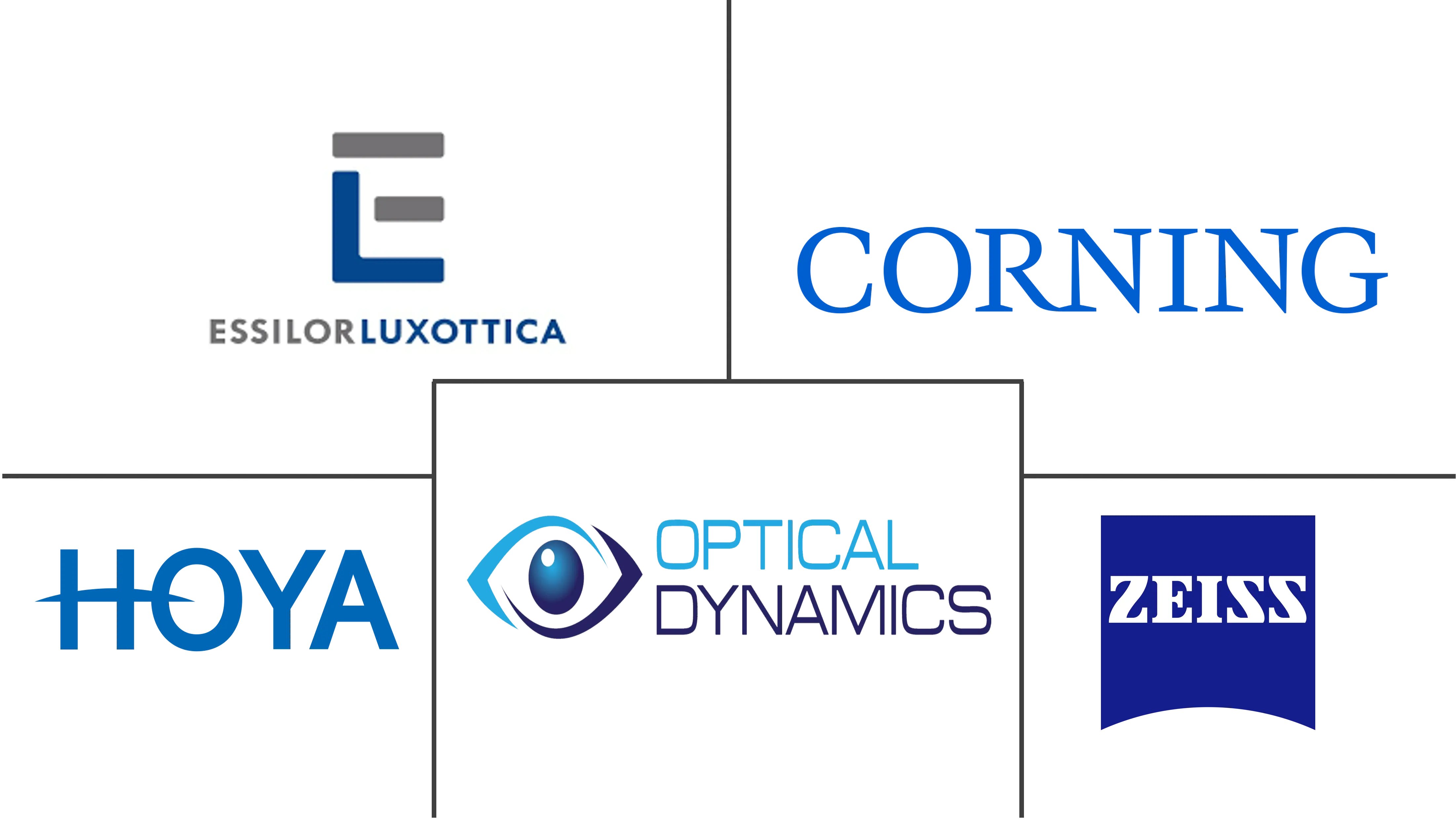
Best Brands for Photochromic Progressive Lenses (Transitions, Essilor, etc.)
Comparison of lens technology and performance across brands (Transitions Vantage, Crizal Prevencia, etc.)
Choosing the right brand for your photochromic progressive lenses is a crucial step in ensuring optimal vision and comfort. Several leading brands offer advanced technologies, each with its unique strengths. Transitions lenses are renowned for their photochromic technology, adapting seamlessly from clear indoors to dark outdoors. Transitions Vantage, for instance, offers enhanced light adaptation speed and a wider range of light transmission. Essilor, another major player, offers Crizal Prevencia lenses, emphasizing superior anti-reflective coatings to minimize glare and improve visual clarity. These lenses boast high-quality photochromic technology alongside advanced scratch resistance. Comparing these brands often involves considering factors like adaptation speed, clarity, and the level of protection against UV rays and harmful blue light. The differences in technology and performance can significantly impact your overall experience with photochromic progressive lenses. Consider carefully what features are most important to you – speed, clarity, or scratch resistance – when comparing brands and their offerings.
Review of specific lens features like polarization and anti-reflective coatings
Many photochromic progressive lenses incorporate additional features to enhance performance and user comfort. Polarization is a key feature that reduces glare, significantly improving vision in bright sunlight. Polarized photochromic progressive lenses reduce glare from reflective surfaces like water or snow. Anti-reflective coatings are another common feature that minimizes distracting reflections on the lens surface, increasing visual clarity, especially in low-light conditions. These coatings minimize the amount of light reflected from your lenses. Some brands offer combinations of polarization and anti-reflective coatings for comprehensive visual enhancement. These advanced lens features provide several benefits, making your vision more comfortable and reducing eye strain. When choosing your photochromic progressive lenses, carefully evaluate which additional features, like polarization and anti-reflective coatings, best suit your individual needs and lifestyle. Understanding these features will allow you to make an informed decision about which photochromic progressive lenses will best suit your needs.
Where to Buy Photochromic Progressive Lenses Online and Offline
Comparison of pricing and services from online retailers (Zenni, Eyebuydirect, Warby Parker, Costco, etc.)
Purchasing photochromic progressive lenses online offers various advantages, including competitive pricing and convenient access. Retailers like Zenni, Eyebuydirect, and Warby Parker offer a wide selection of frames and lens options at often lower prices than traditional brick-and-mortar stores. Costco also provides a competitive option with membership benefits and a range of brands. However, comparing online retailers necessitates considering factors beyond price. Examine customer reviews, return policies, and the availability of virtual try-on tools. Virtual try-on tools assist in visualizing how frames look on your face before purchasing. It is important to evaluate the overall service provided, including customer support and shipping options. This ensures a smoother purchasing experience. Therefore, careful comparison shopping across multiple online retailers is crucial for finding the best balance of price, quality, and service when purchasing your photochromic progressive lenses.
Discussion of virtual try-on tools and return policies offered by different retailers
Virtual try-on tools are increasingly common among online retailers of eyeglasses, significantly improving the online shopping experience. These tools use your photo to virtually “try on” different frames, giving you a preview of how they would look on your face. This feature reduces the risk of ordering frames that don’t suit your features, making online purchases safer. However, the accuracy and effectiveness of these tools vary between retailers. Equally important are the return policies offered. If the virtual try-on isn’t precise enough or the frames don’t fit as expected, a robust return policy protects your investment. Examine the return window, the process for returns, and any associated costs. Some retailers might offer free returns, while others may require you to pay for shipping. Understanding the virtual try-on tools and return policies of each retailer is crucial for a worry-free online purchase of photochromic progressive lenses. These factors minimize risk and ensure a satisfying experience. Consider researching and comparing different online retailers before making a final decision. To find the perfect fit and great value for your money, explore the options available at https://www.mozaer.com/search?q=photochromic progressive lenses”>Mozaer for photochromic progressive lenses. This allows you to conveniently compare various brands and models, benefiting from their user-friendly website and reliable service.
【Cost and Maintenance of Photochromic Progressive Lenses】
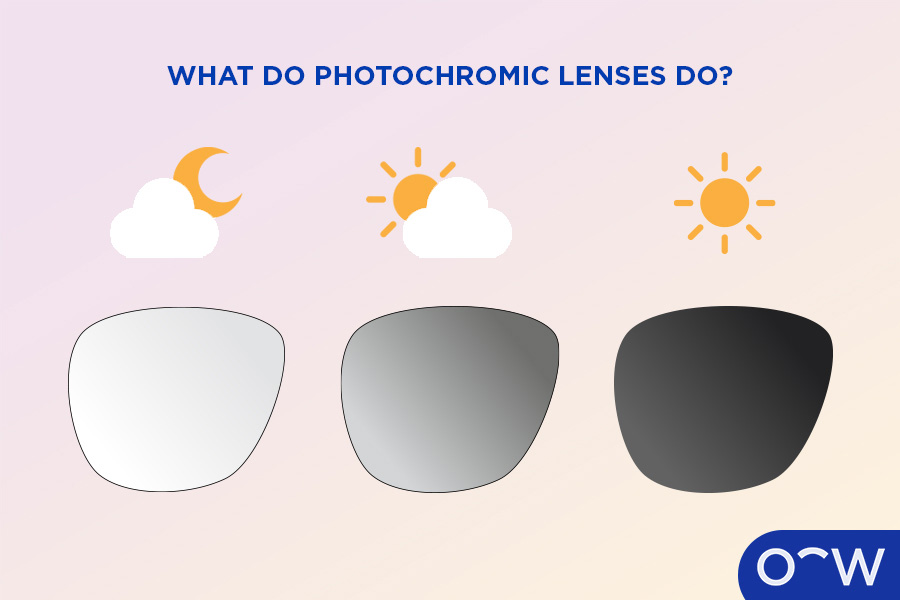
Cost of Photochromic Progressive Lenses
Factors influencing the overall cost (Lens material, brand, additional coatings, prescription complexity)
The price of photochromic progressive lenses varies considerably depending on several key factors. The lens material itself plays a significant role; higher-index lenses, offering thinner and lighter options, typically cost more than standard index lenses. Brand reputation also impacts pricing, with premium brands like Transitions or Essilor often commanding higher prices due to their advanced technologies and established reputation for quality. Adding features like anti-reflective coatings, polarization, or blue light filtering further increases the cost. Finally, the complexity of your prescription directly influences the price. More complex prescriptions requiring specialized manufacturing processes will generally be more expensive. Understanding these cost drivers helps you budget effectively for your photochromic progressive lenses purchase. The price difference between a basic pair and a premium pair with all the bells and whistles can be substantial, so knowing the factors influencing the cost will help you make an informed decision.
Price comparison across different retailers and brands
Comparing prices across different retailers and brands is essential to finding the best value for your photochromic progressive lenses. Online retailers like Zenni, Eyebuydirect, and Warby Parker frequently offer competitive pricing, especially on simpler prescriptions. However, brick-and-mortar stores and independent opticians may provide more personalized service and potentially offer better warranties. Premium brands like Transitions and Essilor, while generally more expensive, often justify their price with superior technology and performance. Costco, with its membership model, frequently offers competitive prices for certain brands. Remember to consider not only the initial cost but also the potential long-term value, including warranty coverage and the quality of the lenses themselves. A direct comparison of several options is crucial to secure the best deal for your photochromic progressive lenses needs. Always check for sales or discounts before committing to a purchase.
Maintaining Your Photochromic Progressive Lenses
Cleaning and care instructions to ensure longevity and optimal performance
Proper cleaning and care are crucial to extending the lifespan and maintaining the optimal performance of your photochromic progressive lenses. Avoid using abrasive cloths or harsh chemicals, as these can scratch the lens surface and degrade the photochromic properties. Use a microfiber cloth and lens cleaning solution specifically designed for eyeglasses to gently wipe away dust, smudges, and fingerprints. Always clean your lenses regularly to prevent the accumulation of dirt and debris which can impair your vision. Regular cleaning helps maintain the clarity and performance of your photochromic progressive lenses. Store your glasses in a protective case when not in use to avoid scratches and accidental damage.
Addressing common issues like scratches and fading
While photochromic progressive lenses are durable, scratches and fading can occur over time due to regular wear and tear. Minor scratches may be less noticeable and still offer adequate vision correction. However, significant scratches impair visual clarity and should be addressed. Deep scratches will likely require lens replacement. Fading of the photochromic properties is more likely with prolonged exposure to intense UV radiation and extreme temperatures. Proper care and storage significantly reduce the risk of fading. If you notice significant scratching or fading, consider visiting your eye care professional or the retailer where you purchased the lenses to explore repair or replacement options. For the best maintenance strategy, carefully follow the manufacturer’s care instructions provided with your photochromic progressive lenses. Protecting your investment with proper care will ensure the continued performance of your photochromic progressive lenses. For more information on various brands and models, consider visiting https://www.mozaer.com/search?q=photochromic progressive lenses”>Mozaer for photochromic progressive lenses. They offer a wide selection and can help you find the perfect pair to meet your needs.
【Photochromic Progressive Lenses for Driving】

Photochromic Progressive Lenses for Driving: Advantages and disadvantages compared to regular sunglasses or separate prescription glasses
Driving presents unique visual challenges. Photochromic progressive lenses offer several advantages over regular sunglasses or separate prescription glasses for drivers. The automatic adjustment to changing light conditions, a key feature of photochromic lenses, enhances safety by minimizing glare and improving visibility in various lighting situations. This is particularly beneficial during dawn and dusk, and when transitioning between sunny and shaded areas. Progressive lenses, with their seamless transition between distances, are advantageous as they allow clear vision for both the dashboard and the road ahead. This eliminates the need for constantly shifting focus between different pairs of glasses. However, some downsides exist. The transition speed of photochromic lenses might be too slow for very rapidly changing light conditions. Some drivers might also find the gradual darkening and lightening distracting. Compared to regular sunglasses, they offer vision correction, but are typically more expensive. Compared to separate prescription glasses and sunglasses, they provide convenience, but potentially compromise optical performance in very bright light or extremely low-light conditions. The choice often depends on individual needs and driving habits.
Photochromic Progressive Lenses for Driving: Discussion on whether they work effectively in cars (considering windshield UV protection)
The effectiveness of photochromic progressive lenses in cars hinges significantly on the car’s windshield UV protection. Modern car windshields typically offer substantial UV protection, filtering out a significant portion of harmful UV rays. This means the lenses may not darken as much inside a vehicle compared to outdoor use, as the UV exposure is reduced. However, the photochromic feature still offers benefits by reducing glare reflected from the dashboard or other surfaces within the car. The lenses will still adjust to the changing light conditions outside the car, providing a smooth transition when the driver looks outside. Therefore, while the full darkening potential might be limited inside a car, photochromic progressive lenses still provide valuable advantages in terms of glare reduction and vision clarity, making them a worthwhile option for many drivers. For optimal performance and to prolong the life of your photochromic lenses, always store them in a protective case when not in use. For a broader selection of high-quality photochromic progressive lenses, check out https://www.mozaer.com/search?q=photochromic progressive lenses”>Mozaer’s selection of photochromic progressive lenses – they offer a variety of styles to suit different needs and preferences.
【Photochromic Progressive Lenses for Sports】
Photochromic Progressive Lenses for Sports: Suitability for different sports (fishing, running, cycling) considering impact resistance and clarity needs
Photochromic progressive lenses offer unique benefits for various sports, but their suitability depends on specific activity demands. For activities like fishing, the adaptive dimming of the lenses is particularly helpful. It provides optimal vision in varying light conditions, improving target acquisition and reducing eye strain. For running and cycling, lightweight frames and impact-resistant lenses are crucial. While photochromic technology is advantageous, prioritizing impact resistance and clarity becomes paramount. The lenses should provide a clear and undistorted view to ensure safety and performance. For instance, some high-impact resistant polycarbonate lenses are available with photochromic properties. The choice needs careful consideration. For instance, high-impact sports might require specialized sports eyewear with specific features like shatter resistance, which may not always be found in standard photochromic progressive lenses.
Photochromic Progressive Lenses for Sports: Comparison of different frame styles and features for sports applications (Roka, Tifosi)
Brands like Roka and Tifosi offer specialized sports eyewear with features optimized for athletic performance. Roka often focuses on high-end, technologically advanced frames with excellent fit, durability and often incorporate features that can integrate with advanced wearable technology. Tifosi, on the other hand, tends to offer a wider range of price points, with a focus on value and performance. While neither brand directly integrates photochromic progressive lenses in all their models, they offer excellent frames that could be paired with such lenses depending on prescription needs. Many high-performance sports glasses are compatible with prescription lenses, including photochromic progressive lenses. The key is to find a frame with features like a secure fit, impact resistance, and ventilation to enhance comfort and prevent fogging during strenuous activities. Always check the compatibility of the frame with your prescription lens type before making a purchase. Consider the overall design, considering factors like weight, ventilation, and how well it conforms to your facial structure, to ensure the eyewear meets the needs of your chosen sport. For a wider selection and to find the perfect pair for your specific needs, consult various reputable retailers and brands. You might consider exploring options like https://www.mozaer.com/search?q=photochromic progressive lenses”>Mozaer’s selection of photochromic progressive lenses and explore frames from various sports eyewear brands for a perfect combination of style and function.
【Potential Drawbacks and Considerations】
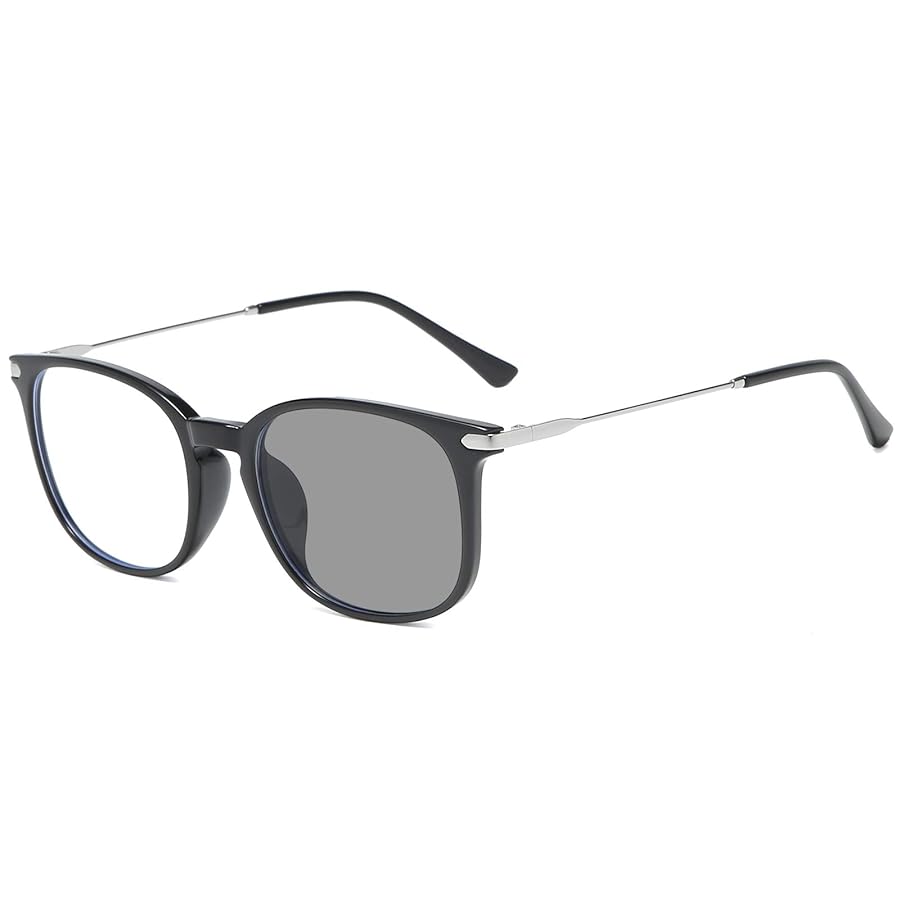
Disadvantages of Photochromic Progressive Lenses
Potential for color distortion and reduced light transmission in certain conditions
Photochromic progressive lenses, while offering significant advantages, aren’t without potential drawbacks. One common concern is the possibility of color distortion. The photochromic molecules responsible for the lens’s light-adapting capabilities can sometimes subtly alter the perceived color of objects, particularly in low-light conditions or during the transition between light and dark. This distortion is usually minor and often not noticeable to most users, but individuals highly sensitive to color accuracy might find it bothersome. Additionally, the lenses’ ability to reduce light transmission isn’t always perfect. In extremely bright sunlight, they might not darken sufficiently to offer the same level of protection as dedicated sunglasses. This could lead to increased glare or eye strain in such conditions. These lenses offer adaptive darkening, but it’s crucial to understand its limitations. The level of darkening and the speed of transition can vary depending on the specific lens technology and environmental factors such as UV intensity and temperature.
Cost compared to other lens options
Another important consideration is the cost of photochromic progressive lenses. These lenses typically cost more than standard progressive lenses or single-vision lenses due to the added cost of the photochromic technology. Compared to purchasing separate pairs of prescription glasses and sunglasses, the long-term cost might be comparable or even slightly lower, depending on individual usage patterns. However, if budget is a primary concern, simpler lens options might be a more affordable alternative. The high cost reflects the advanced technology incorporated into their design and production, but customers should weigh this against the convenience and benefits they provide. Therefore, prospective buyers should carefully evaluate their budget and needs before making a purchase decision.
Photochromic Progressive Lenses and Eye Health
Benefits and potential risks associated with prolonged use of photochromic lenses
The long-term effects of prolonged photochromic lens use on eye health are generally considered minimal. The main benefit is the enhanced UV protection provided by these lenses, shielding eyes from harmful ultraviolet radiation, a known risk factor for cataracts and macular degeneration. However, prolonged exposure to any type of light, even filtered light, can potentially lead to eye strain or fatigue in some individuals, particularly those who already have existing eye conditions. It’s advisable to take regular breaks from screen time and outdoor activities, especially during periods of intense sunlight, to minimize potential discomfort. Always consult an ophthalmologist or optometrist for personalized advice related to your specific eye health and lens choices.
Discussion on blue light filtering and UV protection capabilities
Many modern photochromic progressive lenses incorporate blue light filtering capabilities in addition to their UV protection. Blue light, emitted from digital screens and sunlight, is associated with eye strain, sleep disturbances, and potentially even long-term eye health issues. These blue light filters help mitigate some of these risks by reducing the amount of blue light reaching the eyes. The level of blue light filtration varies considerably depending on the lens brand and model. UV protection is a critical aspect of photochromic lenses. They effectively block a significant portion of harmful UVA and UVB rays, protecting eyes from sun damage. The extent of this protection is indicated by the lens’s UV absorption rating, which should be considered when selecting lenses. To ensure optimal eye protection and to address specific concerns about blue light or UV exposure, consult with your eye care professional to determine the most appropriate lens type for your needs. For more information and to explore a variety of options, consider visiting https://www.mozaer.com/search?q=photochromic progressive lenses”>Mozaer’s selection of photochromic progressive lenses to find the perfect fit for your vision and lifestyle.
【Frequently Asked Questions (FAQ)】
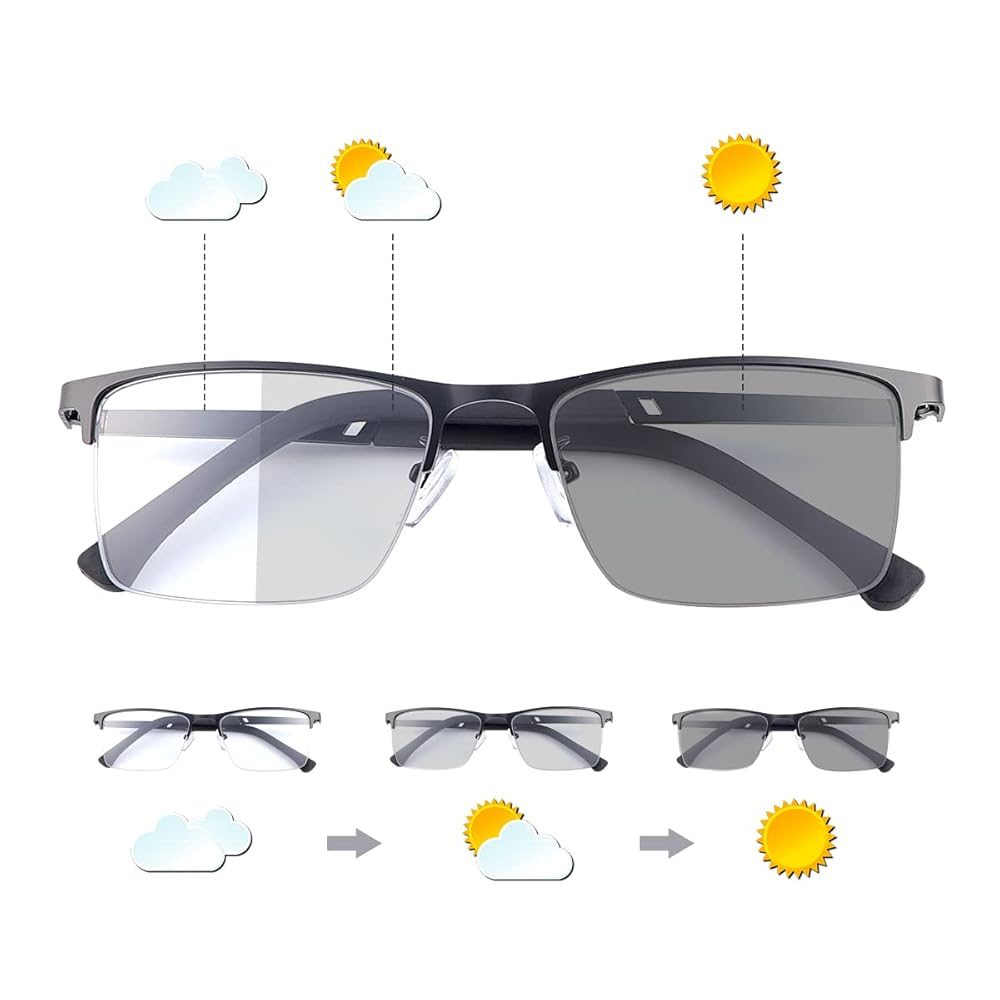
Do photochromic progressive lenses work in all lighting conditions?
Explanation of activation and deactivation mechanisms and limitations
Photochromic progressive lenses utilize photochromic molecules that react to ultraviolet (UV) light. These molecules change their structure in response to UV exposure, darkening the lenses to reduce glare. When UV light is reduced or absent, the molecules revert to their original state, lightening the lenses. However, this process isn’t instantaneous. There’s a transition period during which the lenses adjust to the changing light levels. This transition time can be affected by temperature and the intensity of the UV light. Crucially, the effectiveness of these lenses is directly tied to the presence of UV light. Therefore, they may not darken fully or as quickly in cloudy conditions, inside buildings (lack of UV), or in car interiors (car windshields typically filter out a significant amount of UV rays). While the lenses offer adaptive darkening, understanding these limitations is key to realistic expectations. The technology provides adaptive vision correction and reduces the need for separate sunglasses, but users shouldn’t anticipate a perfect response in all lighting conditions.
Addressing user concerns about performance in low-light and car environments.
A common concern is the performance of photochromic progressive lenses in low-light environments. While they’ll lighten significantly when UV light is reduced, they may not become completely clear. This slight residual darkness can be a minor inconvenience for some users, particularly in very dimly lit conditions. In car environments, the situation is similar. The reduced UV transmission through car windshields limits the activation of the photochromic molecules. While they might darken slightly, they won’t typically achieve the same level of darkening as when exposed to direct sunlight. Drivers concerned about glare in their vehicles should consider supplementary solutions, such as using a separate pair of prescription sunglasses for driving. The lenses’ adaptive nature is a significant benefit, but limitations in certain lighting conditions should be acknowledged. For improved adaptability in various light conditions, careful consideration of lens type and technology is essential during the selection process.
Are photochromic progressive lenses worth the cost?
Weighing the pros and cons based on individual needs and budget.
The cost of photochromic progressive lenses is a primary concern for many consumers. These lenses are typically more expensive than standard progressive lenses or single-vision lenses because of the added photochromic technology. However, the added convenience and protection must be factored into the cost-benefit analysis. These lenses offer both vision correction and adaptive UV protection, eliminating the need for separate sunglasses. This convenience can be significant for individuals who lead active lifestyles or frequently switch between indoor and outdoor environments. Consider the long-term cost implications. While the initial investment might be higher, the elimination of needing additional sunglasses could offset the additional expense over time, making them cost-effective in the long run for many users. Therefore, careful evaluation of one’s lifestyle and budget is essential to determine the financial viability of this option.
Comparison of overall value proposition to alternative options.
Compared to purchasing separate pairs of prescription glasses and sunglasses, the value proposition of photochromic progressive lenses hinges on individual needs and usage patterns. For someone who spends considerable time outdoors and values the convenience of having just one pair of glasses, the additional cost can be justifiable. However, if cost is a major constraint, or if the individual rarely spends time outdoors, the benefits might not outweigh the increased expense. Standard progressive lenses or single-vision lenses, coupled with a separate pair of sunglasses, might offer a more cost-effective alternative in such cases. The choice ultimately depends on a thorough cost-benefit analysis based on individual circumstances. To find the ideal balance between cost and convenience, explore a wide variety of options available. Check out https://www.mozaer.com/search?q=photochromic progressive lenses”>Mozaer’s selection of photochromic progressive lenses to see what suits your budget and vision needs best.
【Understanding Your Needs: Choosing the Right Reading Glasses】
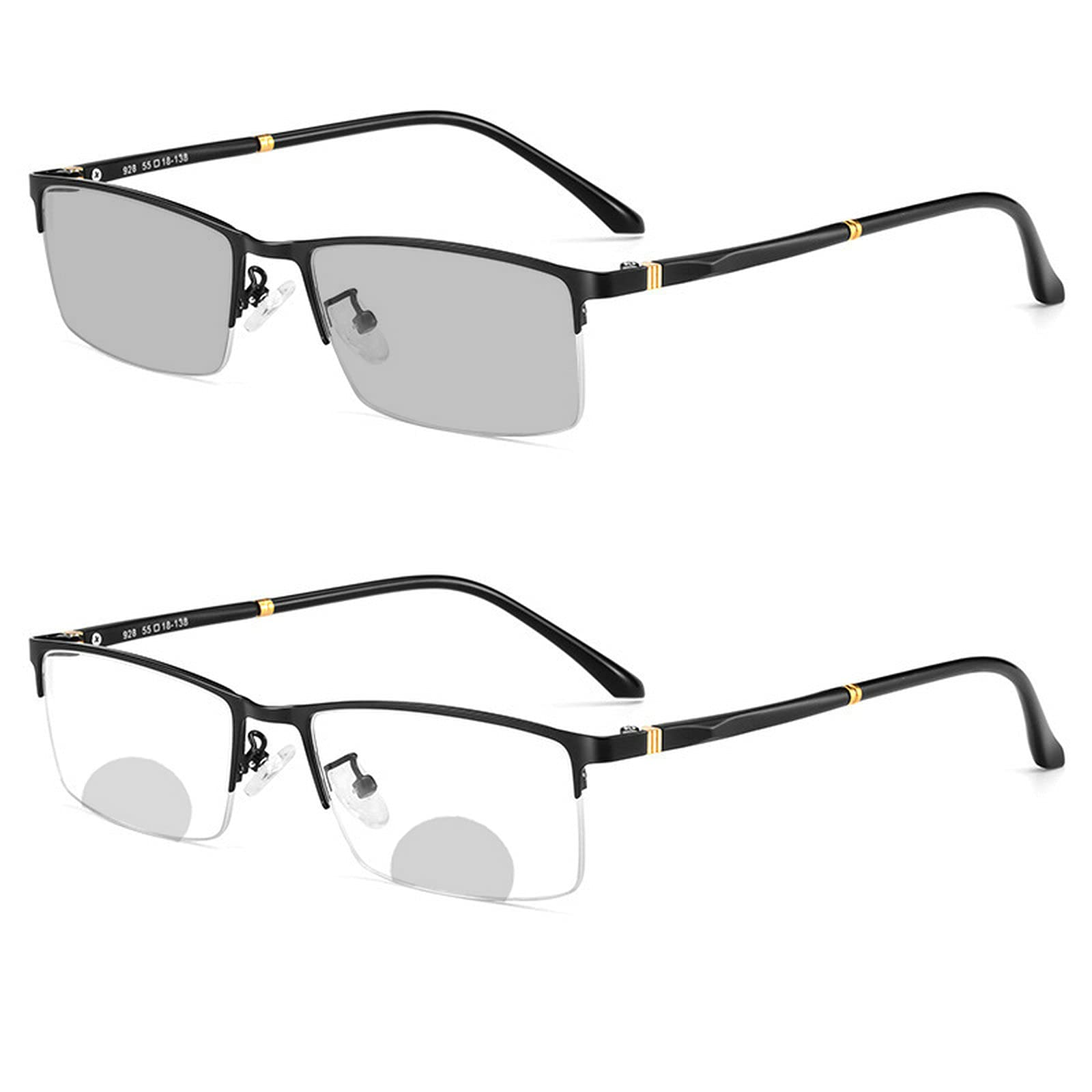
在2025年,选择合适的眼镜远不止视力矫正这么简单,它更是关于如何匹配您的生活方式与视觉需求。对于许多寻求便捷与多功能性的用户而言,将 photochromic progressive lenses 纳入“阅读眼镜”的考量范围至关重要。这些先进的渐进镜片不仅提供远、中、近距离的无缝过渡视力,还具备随光线变化自动变色的光致变色特性,极大地提升了日常使用的便利性和眼睛防护。理解您的具体需求,是选择包括光致变色渐进镜片在内的任何一款“阅读眼镜”的基础。
寻找完美的放大倍率
当谈及“阅读眼镜”时,人们首先想到的是放大倍率,即屈光度。对于传统的单焦点阅读镜,这通常是一个固定的度数。然而,对于像 photochromic progressive lenses 这样的渐进镜片,其精髓在于提供一个连续变化的屈光度范围,而非单一的放大倍率,从而满足不同距离的视觉需求。
确定您的阅读视力:考虑咨询验光师以获得准确处方。许多在线零售商提供指南,帮助您根据阅读距离确定度数。
要准确确定您所需的阅读视力,特别是对于复杂的 photochromic progressive lenses 处方,咨询专业的验光师是不可或缺的第一步。验光师会进行全面的眼部检查,不仅评估您的远视力,还会精确测量近距离工作所需的“附加度数”(ADD Power),这是渐进镜片设计中的关键参数。这个附加度数决定了镜片下部用于阅读区域的放大效果。对于居家使用或户外阅读场景,一个精准的附加度数能够确保您在佩戴光致变色渐进镜片时,无论是在室内阅读书籍,还是在阳光下阅读电子设备,都能享受到清晰的近距离视力。尽管许多在线资源和测试可以帮助初步估算阅读度数,但它们无法替代专业验光的精确性与个性化建议,尤其当涉及到带有散光矫正或特殊棱镜的光致变色渐进镜片时。
理解不同放大强度的影响:解释不同屈光度(例如+1.00,+2.00)对阅读清晰度的影响。
在选择“阅读眼镜”时,理解不同屈光度(或放大强度)对阅读清晰度的影响至关重要。例如,+1.00屈光度的镜片提供轻微的放大效果,适用于轻度老花,能够轻松看清近距离小字。而+2.00屈光度的镜片则提供更强的放大,适合中度老花。对于 photochromic progressive lenses 而言,不同“附加度数”会影响镜片近用区的阅读舒适度。一个+1.00的ADD power意味着镜片近用区将提供一个基础的阅读放大,而+2.00的ADD power则会提供更强的近距离聚焦能力。选择不当的附加度数可能导致眼睛疲劳、模糊或阅读距离不适。例如,过高的度数会使得您的阅读距离过近,而过低的度数则可能让您需要将阅读材料拿得更远才能看清。因此,确保您的渐进镜片具备适合您实际阅读距离和用眼习惯的正确附加度数,对于长期舒适用眼至关重要。
考虑您的生活方式和需求
选择最适合您的“阅读眼镜”——无论是标准的还是包含 photochromic progressive lenses 的——都必须与您的日常生活习惯和特定需求紧密结合。考量您的日常活动、工作环境以及对视觉舒适度的具体要求,将有助于您做出明智的选择。
蓝光眼镜与普通阅读眼镜:讨论两者的利弊,引用有关蓝光暴露及其对睡眠和眼睛疲劳影响的数据。
在当今数字时代,蓝光眼镜与普通阅读眼镜的选择成为许多人的考量。普通阅读眼镜主要解决屈光不正问题,提供清晰的近距离视力。然而,考虑到我们长时间暴露于屏幕蓝光下,特别是使用手机、平板或电脑进行阅读和工作时,蓝光过滤镜片的重要性日益凸显。研究表明,长时间暴露于高能量可见光(HEV)蓝光可能导致数字眼疲劳(Digital Eye Strain)、影响褪黑素分泌进而干扰睡眠周期,甚至可能对视网膜健康产生长期影响。
一些先进的 photochromic progressive lenses 已经融合了蓝光过滤技术,这意味着您可以在享受远近无缝转换视力,以及自动适应光线变化带来的便捷的同时,也能获得额外的蓝光防护。这种集成方案对于那些白天需要频繁进出室内外,晚上又长时间面对电子屏幕的专业人士来说,提供了卓越的综合解决方案。例如,在2025年的市场趋势中,越来越多制造商将蓝光过滤层植入光致变色渐进镜片中,旨在提供全面的视觉保护,有效减少眼睛疲劳,并维护良好的睡眠质量。选择这种多功能镜片,可以在不牺牲视觉质量的前提下,更好地应对现代生活中的多种视觉挑战。
特定需求:解决散光、双焦点或渐进镜片男性用户的需求。提及为男性驾驶员、电脑工作者或游戏玩家提供的选择。
当谈到男性的特定视觉需求时, photochromic progressive lenses 展现出其无与伦比的适应性。许多男性可能存在散光问题,这会导致无论远近视力都出现模糊或失真。现代的光致变色渐进镜片完全可以根据散光轴位和度数进行精确定制,确保矫正散光的同时,仍提供清晰的多焦点视觉体验。
对于厌倦了传统双焦点眼镜(其明显的分界线和“跳像”现象)的男性用户而言,渐进镜片提供了无缝的视力过渡,从远距离到中距离,再到近距离,一切都自然流畅,使得日常活动,如阅读报纸、查看仪表板或操作电脑,变得异常舒适。
- 驾驶员: 光致变色特性对于男性驾驶员尤其有利。在阳光明媚的日子里,这些镜片会自动变暗,减少眩光,提高驾驶安全性和舒适度。当进入隧道或黄昏时,它们会迅速变亮,确保视野清晰。对于需要看清路标、仪表盘和后视镜的男性驾驶员,渐进镜片提供了所有距离的清晰视野,而光致变色功能则省去了频繁更换太阳镜的麻烦。
- 电脑工作者: 长期在电脑前工作的男性可能会经历眼睛疲劳。渐进镜片的中距离区域(或称为“中间过渡区”)设计对于电脑屏幕提供了最佳的视力矫正。结合蓝光过滤功能(如果镜片具备), photochromic progressive lenses 能有效缓解数字眼疲劳,提高工作效率和舒适度。
- 游戏玩家: 游戏玩家经常需要在不同距离(屏幕到控制器,甚至更远)之间快速切换视线。渐进镜片能够提供所需的快速焦点转换能力。如果游戏环境的光线多变,例如白天在窗边,晚上在昏暗的房间,光致变色功能也能提供额外的视觉舒适度,减少光线变化带来的不适。
总之,无论是矫正散光、替代双焦点,还是满足驾驶、电脑工作或游戏等特定活动的需求, photochromic progressive lenses 都能为男性用户提供一个高度个性化和功能强大的解决方案。考虑到如此广泛的适用性和便利性,探索适合您生活方式的光致变色渐进镜片是值得的。您可以通过访问https://www.mozaer.com/search?q=photochromic progressive lenses”>Mozaer的光致变色渐进镜片系列,找到最符合您需求的优质产品。
【Top Brands and Styles: A Comprehensive Review】
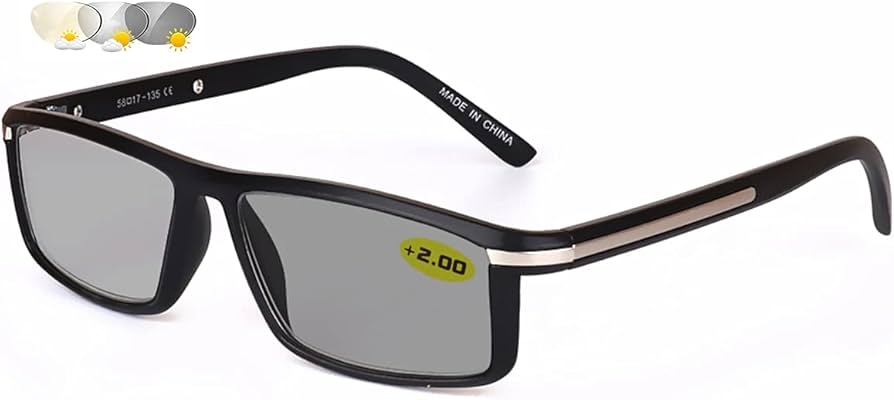
在2025年,选择一副理想的 photochromic progressive lenses 不仅关乎矫正视力,更体现了个人风格与生活品味。市场上琳琅满目的品牌与款式,从奢华高端到经济实惠,提供了丰富多样的选择。本节将深入探讨一些顶级品牌和亲民选项,帮助您在品质、美学和预算之间找到完美平衡,确保您的光致变色渐进镜片既实用又时尚。
高端选项:卓越品质与风格
对于追求极致视觉体验和设计感的顾客,高端品牌提供了无与伦比的 photochromic progressive lenses 解决方案。这些品牌通常采用最先进的光致变色技术、顶级光学材料和精湛的镜架工艺,确保清晰度、耐用性和时尚感达到最优。它们不仅仅是眼镜,更是提升个人形象的配饰。
Felix Gray 评测:精湛工艺、时尚格调与价格定位
Felix Gray 以其对数字用眼疲劳的深刻理解和独特设计理念而闻名。尽管其核心优势在于蓝光过滤技术,但如果他们提供 photochromic progressive lenses,消费者可以期待这些渐进镜片同样秉承品牌的高标准。Felix Gray 的镜框通常展现出简约而精致的工艺,采用优质意大利醋酸纤维或轻质金属等材料。这种注重细节的制造方法确保了镜架的耐用性和佩戴舒适度,完美承载光致变色渐进镜片的复杂光学结构。
在风格方面,Felix Gray 提供了一系列时尚且百搭的镜框设计,从经典的方框到现代的圆形款式,无不彰显出内敛的格调。这些设计使其成为追求时尚、注重健康,并乐意为卓越品质付费的用户的理想选择。其价格定位反映了其优质的材料、精湛的工艺以及可能融入的先进蓝光过滤等镜头技术,使其成为高端 photochromic progressive lenses 市场中的一个强劲选手。他们专注于提供既能应对现代数字生活,又能适应光线变化的视觉解决方案,从而有效缓解眼睛疲劳并增强全天候的视觉舒适性。
Warby Parker 评测:品牌道德实践、虚拟试戴工具与时尚镜框系列
Warby Parker 重新定义了眼镜购买体验,以其“买一副,捐一副”的道德实践和创新的在线服务赢得了广泛赞誉。对于寻求 photochromic progressive lenses 的用户而言,Warby Parker 的优势在于其用户友好的在线平台和在家试戴服务。这项服务对于选择渐进镜片尤为重要,因为它允许用户在真实生活中评估镜框与光致变色镜片功能的结合效果,从而确保最佳的适应性和美观度。
Warby Parker 拥有一系列设计独特且风格多样的镜框,从复古经典的“Kimball”型到现代简约的款式,每一副都旨在提供卓越的视觉体验和时尚宣言。这些镜框可完美搭载 photochromic progressive lenses,确保远、中、近距离的无缝切换。镜片通常会配备高质量的防反射和防刮涂层,这对于延长光致变色渐进镜片的寿命和保持其清晰度至关重要。Warby Parker 的定价策略使其处于高端与亲民之间的平衡点,既保证了产品的品质和设计,又使其相对更容易被大众接受。选择 Warby Parker 意味着不仅获得一副功能强大的渐进镜片,还支持了其企业社会责任的实践。
经济实惠的选择:高性价比的优雅
对于预算有限但仍希望体验 photochromic progressive lenses 便利性的顾客,市场上也有许多高性价比的选项。这些选择通常侧重于核心功能性,提供可靠的光致变色和渐进视觉矫正,同时保持价格的竞争力。
TruVision Readers 评测:价值主张与风格,侧重于经济性和基本设计
TruVision Readers 在经济型阅读眼镜市场占据一席之地,以其高性价比和便捷性而受到欢迎。当涉及到 photochromic progressive lenses 时,TruVision 通常被视为一个功能性的入门级选择。这些镜片可能不会提供最顶级的变色速度或最广泛的颜色范围,但它们能够有效地提供从室内到室外、从近到远的无缝视觉过渡。
其镜框设计通常偏向于经典和实用,避免过于前卫或昂贵的设计元素,以最大限度地降低成本。对于那些初次尝试光致变色渐进镜片,或将其作为备用眼镜使用的用户而言,TruVision 提供了一个低风险、高价值的解决方案。它们满足了基本的视觉需求,使得用户能够以经济的价格享受到现代镜片技术带来的便利。这种注重基本功能和可负担性的策略,使其成为追求实用性的消费者进行 photochromic progressive lenses 选择时的理想考量。
亚马逊选项:高性价比品牌的风格、舒适度和耐用性评测
亚马逊作为一个庞大的电商平台,提供了令人难以置信的 photochromic progressive lenses 选择范围,其中不乏价格极其亲民的品牌。在这里,消费者可以找到各种类型的眼镜,从无品牌基础款到新兴的专业眼镜品牌。这些眼镜的优点在于极高的价格竞争力,往往能以传统零售价的一小部分获得渐进光致变色功能。
然而,质量参差不齐是亚马逊购物的挑战。消费者在选择时需要仔细阅读用户评价,关注镜片的光学清晰度、变色速度和均匀性,以及镜框的舒适度和耐用性。许多经济型选项会提供基本的防刮擦和防反射涂层,但可能不具备高端镜片特有的更高级功能,例如先进的蓝光过滤或超薄设计。镜框材质通常是轻质塑料或基础金属,设计以实用和大众化为主。尽管如此,如果仔细挑选,亚马逊仍然是寻找高性价比 photochromic progressive lenses 的宝库。对于那些希望以最低成本体验渐进变色镜片的用户,这些选项提供了一个绝佳的试水机会。在选择时,应侧重于评价中提到的佩戴舒适度、变色效果的自然性以及镜片的长期耐用性,以确保物有所值。
无论您的预算和风格偏好如何,市场上总有一款 photochromic progressive lenses 能够满足您的特定需求。从注重时尚与先进科技的高端品牌,到提供基本功能和卓越性价比的经济型选择,多样化的产品让每个人都能找到适合自己的理想眼镜。
为了探索更多高品质的光致变色渐进镜片选择,包括各种款式和功能,您可以访问https://www.mozaer.com/search?q=photochromic progressive lenses”>Mozaer的光致变色渐进镜片系列。这里汇集了多种满足不同预算和需求的优质产品,助您轻松找到最适合您的视觉解决方案。
【Addressing Common Concerns: FAQs and Expert Advice】
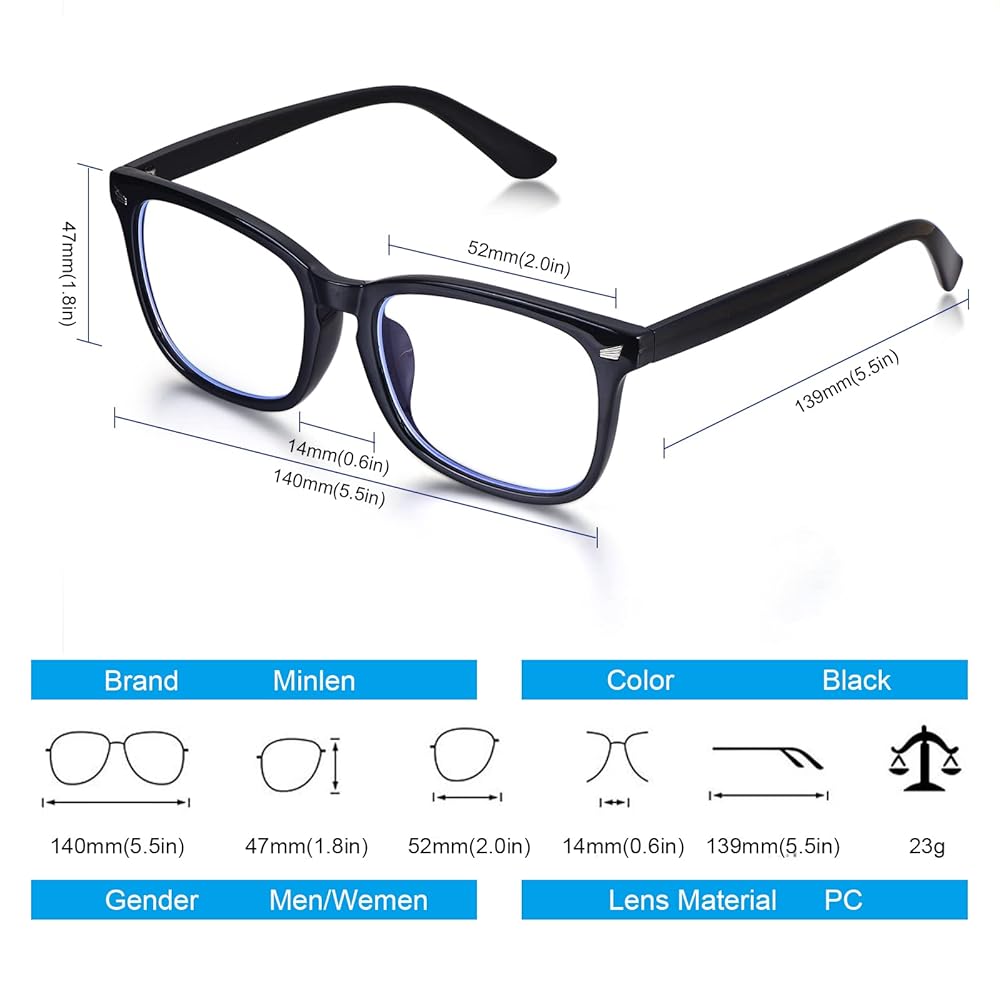
在2025年,随着科技的飞速发展,消费者在选择 photochromic progressive lenses 时面临着诸多疑问,尤其是在新兴技术和购买渠道方面。本节将深入探讨关于蓝光眼镜的有效性以及如何选择完美镜框的常见问题,旨在提供基于事实的专业建议,帮助您做出明智的决策,确保您的光致变色渐进镜片既满足视觉需求又兼顾舒适与风格。
蓝光眼镜:它们真的有效吗?
随着数字设备普及,关于蓝光及其对眼睛影响的讨论日益增多。许多用户在考虑购买 photochromic progressive lenses 时,也会关注是否应同时考虑蓝光过滤功能。了解蓝光眼镜的真正效用至关重要。
蓝光阻挡眼镜的有效性:引用研究或专家意见证实其在减轻眼睛疲劳和改善睡眠质量方面的有效性。
蓝光过滤眼镜,或称蓝光阻挡眼镜,旨在减少数字屏幕发出的高能可见(HEV)蓝光暴露。多项研究和眼科专家均指出,长期接触蓝光可能导致数字用眼疲劳(Digital Eye Strain),也称为计算机视觉综合症(Computer Vision Syndrome),其症状包括眼睛干涩、视力模糊、头痛和颈部疼痛。美国视光协会(American Optometric Association)和视光师普遍认为,蓝光过滤镜片能够有效减少这些症状。例如,发表在《光学学杂志》(Journal of Optometry)上的一项研究表明,佩戴蓝光过滤镜片能够显著减轻因长时间使用电脑而引起的视觉疲劳。
此外,蓝光对人体的昼夜节律(Circadian Rhythm)有显著影响。夜晚接触蓝光会抑制褪黑素(Melatonin)的生成,这是一种调节睡眠的关键激素,从而可能扰乱睡眠模式。专业人士普遍认同,在夜间使用电子设备时佩戴蓝光阻挡眼镜,有助于减少蓝光对睡眠周期的干扰,从而提高睡眠质量。对于佩戴 photochromic progressive lenses 的用户来说,如果他们的日常活动涉及大量屏幕时间,集成蓝光过滤功能可以提供额外的舒适度和健康益处,使其成为一种多功能的视觉解决方案,既能适应光线变化,又能抵御数字屏幕的挑战。
蓝光眼镜的潜在弊端:解决任何潜在的副作用,如头痛或在弱光条件下视力下降。
尽管蓝光过滤眼镜具有诸多优势,但潜在的副作用也应被考虑。一部分使用者报告称,佩戴蓝光眼镜后可能会出现轻微的颜色失真,因为镜片会过滤掉光谱中的部分蓝色光。这种颜色变化在日常使用中通常不明显,但在需要精确颜色判断的专业领域(如设计、摄影)可能会造成困扰。此外,少数人可能会经历初期适应性头痛,这通常是由于视觉系统对新镜片过滤效果的调整所致,通常在几天内自行消退。
在弱光条件下,某些高强度蓝光阻挡镜片可能会略微降低整体光线透过率,从而导致在昏暗环境中视力感觉不如平时清晰。这种现象较为罕见,且主要与镜片镀膜的类型和密度有关。值得注意的是,这些潜在弊端通常是轻微且可控的。在选择集成蓝光过滤的 photochromic progressive lenses 时,建议咨询专业的视光师,他们可以根据您的具体需求和生活习惯,推荐最适合的镜片类型,确保您获得最佳的视觉体验而无不适。为了深入了解更多高品质的变色渐进镜片,包括那些带有先进蓝光过滤选项的,您可以探索 https://www.mozaer.com/search?q=photochromic progressive lenses”>Mozaer的创新光致变色渐进镜片,它们旨在提供全方位的视觉保护和舒适度。
寻找完美的贴合与风格
选择 photochromic progressive lenses 不仅关乎镜片功能,镜框的贴合度与风格同样重要。一个合适的镜框能显著提升佩戴舒适度,并确保渐进镜片最佳的光学性能。
如何根据脸型选择老花镜:提供选择与不同脸型(例如,圆脸、方脸、椭圆脸)相配的镜框的基本指南。
选择与脸型相配的镜框是确保眼镜佩戴舒适和提升个人美感的关键一步。对于 photochromic progressive lenses 而言,镜框不仅承载了复杂的镜片,其尺寸和形状还会影响您通过不同视觉区域看东西的体验。以下是一些基本指南:
- 圆脸:圆脸的特征是脸部长度和宽度比例相似,下巴和脸颊线条柔和。选择具有锐利角度和直线条的镜框,如方形、长方形或几何形镜框,可以增加脸部轮廓感,使其看起来更修长。避免圆形或过于细小的镜框,它们可能使脸部显得更圆。
- 方脸:方脸的特征是下巴、颧骨和额头宽度相似,下巴线条分明。为了柔化脸部线条,应选择圆形、椭圆形或猫眼形等具有曲线感的镜框。避免方形或过于粗重的镜框,它们可能会加重脸部棱角感。
- 椭圆脸:椭圆脸被认为是理想的脸型,长度略大于宽度,下巴线条圆润。几乎所有形状的镜框都适合椭圆脸,但应避免过宽或过窄的镜框,以免破坏脸部的自然平衡。中等大小的几何形、飞行员款或经典的威灵顿镜框都是不错的选择。
- 心形脸:心形脸的特征是额头宽,颧骨高,下巴尖。为了平衡脸部上宽下窄的比例,可以选择底部较宽或带有细节装饰的镜框,如半框、无框或下缘较圆润的镜框。猫眼形或飞行员款也能很好地突出颧骨。
无论何种脸型,确保镜框的宽度与脸部最宽处大致相同,鼻托舒适,镜腿长度适中,避免镜框在佩戴时下滑,这对于确保渐进镜片的视觉中心对准您的瞳孔至关重要,从而优化 photochromic progressive lenses 的功能性。
在线购买男士老花镜的最佳地点:推荐信誉良好的在线零售商,提供良好的退货政策和虚拟试戴选项(例如,Warby Parker, Eyebuydirect)。
在2025年,在线购买眼镜,包括 photochromic progressive lenses,已成为一种便捷且日益流行的方式。对于男士而言,许多在线零售商提供了多样化的款式和强大的功能。选择一个信誉良好且提供优质客户服务的平台至关重要,特别是当涉及到复杂的渐进镜片时。
- Warby Parker:正如前文所述,Warby Parker 以其“在家试戴”服务和时尚镜框系列而闻名。这项服务对于选择渐进镜片尤其有用,因为它允许您在舒适的家中评估不同镜框与您的脸型和个人风格的契合度,确保最终选购的 photochromic progressive lenses 佩戴舒适且外观得体。他们提供全面的客户支持和清晰的退货政策,让线上购物无后顾之忧。
- Eyebuydirect:Eyebuydirect 是另一个广受欢迎的在线眼镜零售商,提供从经济实惠到高端的广泛镜框和镜片选项,包括多种光致变色和渐进镜片配置。他们拥有强大的虚拟试戴工具,您可以通过上传照片或使用摄像头实时查看镜框在您脸上的效果。其透明的价格结构和频繁的折扣使其成为寻求高性价比的 photochromic progressive lenses 的理想选择。
在选择在线平台时,除了虚拟试戴和退货政策,还应关注其提供的镜片技术和加膜选项(如防反射、防刮、蓝光过滤),以确保您的 photochromic progressive lenses 能够满足您所有的视觉需求。在线零售商通常能提供比传统实体店更具竞争力的价格和更丰富的款式选择,为男士们寻找完美眼镜提供了极大的便利。为了探索更多适合男士的光致变色渐进镜片款式和选项,您可以访问 https://www.mozaer.com/search?q=photochromic progressive lenses”>Mozaer的男士光致变色渐进镜片系列,发现更多符合您风格和功能需求的优质选择。
【Beyond the Basics: Advanced Features and Considerations】
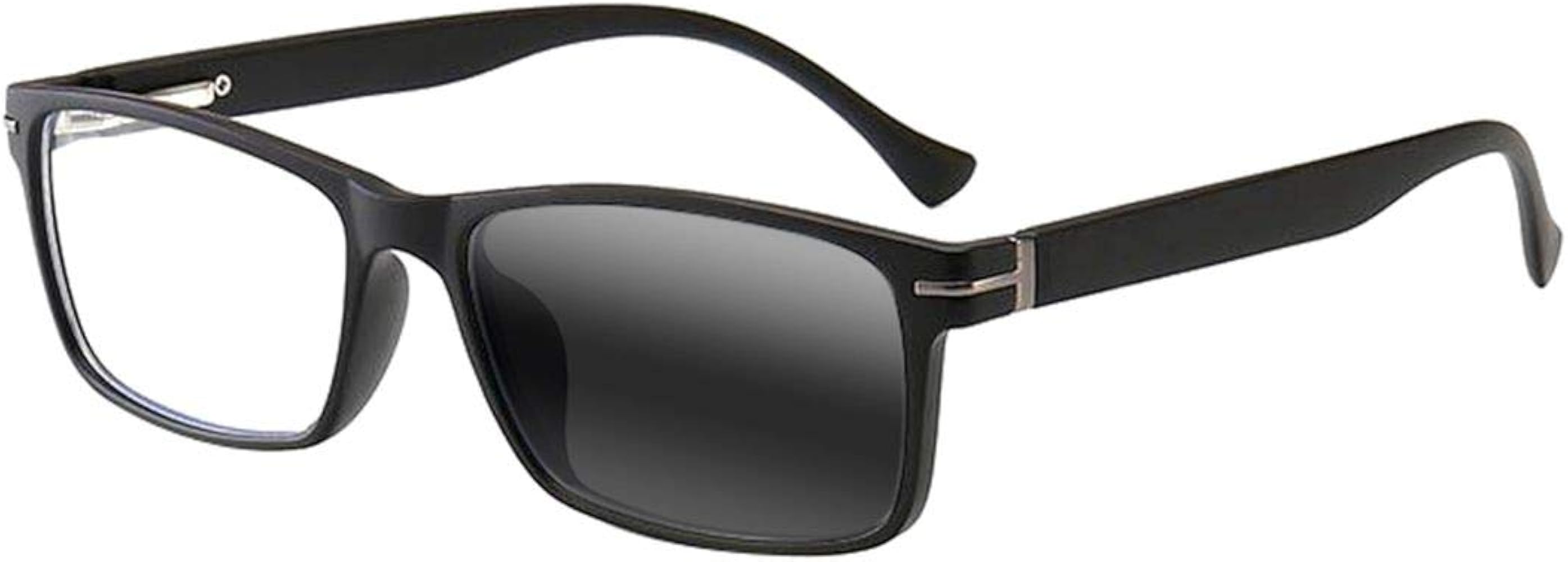
在2025年,选择一副理想的photochromic progressive lenses(光致变色渐进镜片)不仅关乎镜片本身的功能性,更在于其与镜框的结合如何提升整体的佩戴体验和产品的耐用性。本节将深入探讨镜框的先进设计特点,如弹簧铰链和材质选择,以及镜片除了核心变色渐进功能之外,所能提供的额外保护和视觉优化选项,确保您能挑选到最符合高标准期望的视觉解决方案。
Spring Hinges and Durability(弹簧铰链与耐用性)
镜框的设计细节对眼镜的舒适度和寿命至关重要,特别是对于承载复杂光学设计的photochromic progressive lenses而言。弹簧铰链作为一项先进的镜框技术,在提升佩戴体验和延长产品寿命方面发挥着关键作用。
Advantages of spring hinges:(弹簧铰链的优势)
弹簧铰链,也称为柔性铰链,是眼镜镜腿与镜框连接处的一种创新设计。其核心优势在于铰链内部集成了小型弹簧机制,允许镜腿在向外打开时超过传统的90度角,并能自动复位。这一特性显著提升了photochromic progressive lenses的佩戴舒适度和耐用性:
- 增强舒适度:弹簧铰链能够适应不同的头部宽度,减少镜腿对太阳穴的压力,避免佩戴过紧或过松。这对于长时间佩戴,尤其是需要精确视域的光致变色渐进镜片用户来说,能够显著减轻不适感。
- 提升耐用性与寿命:由于铰链的弹性,镜框在受到外部冲击或意外弯曲时,能更好地吸收压力,降低镜腿变形或断裂的风险。例如,当眼镜被意外压到或从脸上滑落时,弹簧铰链能提供额外的缓冲,从而延长眼镜的使用寿命。根据行业分析,配备弹簧铰链的眼镜在日常磨损下的故障率显著低于传统铰链。许多领先的眼镜制造商,如一些高端光学品牌,都将弹簧铰链作为其优质镜框的标准配置,以确保其多焦点变色镜片的用户获得持久且可靠的佩戴体验。
- 保持镜片光学性能:稳定的镜框佩戴能确保渐进镜片的视觉中心始终对准瞳孔,这是发挥其无缝视觉转换功能(从远到近)的关键。弹簧铰链的自适应性有助于保持这种稳定性,确保无论是处于静态阅读还是动态活动中,佩戴者都能获得最佳的视觉清晰度。
Materials and construction:(材质与结构)
镜框的材质直接决定了photochromic progressive lenses的整体重量、耐用性、舒适度以及美学风格。在2025年,市场提供了多种高性能材料,每种都有其独特的优缺点:
- 醋酸纤维 (Acetate):一种植物基塑料,以其丰富的色彩、光泽和图案多样性而闻名。醋酸纤维镜框通常具有较好的韧性和适中的重量,可以塑造成各种时尚的款式,包括粗框和复古风格。
- 优点:颜色选择广,手感舒适,低致敏性,可塑性强。
- 缺点:相对钛金属更重,如果护理不当可能受损或变色。
- 钛金属 (Titanium):一种高科技金属,因其卓越的强度、极轻的重量和优异的耐腐蚀性而广受欢迎。钛金属镜框通常外观纤细,适合寻求极简和耐用设计的用户。
- 优点:极致轻巧,极其坚固耐用,低致敏性,耐腐蚀,适合敏感皮肤。
- 缺点:成本较高,款式选择相对较少,不易染色。
- TR90塑料 (TR90 Plastic):一种记忆塑料,以其极佳的柔韧性和抗断裂性而著称。TR90镜框非常轻便,不易变形,是运动眼镜和日常佩戴的理想选择。
- 优点:超轻,极度柔韧,不易断裂,价格亲民。
- 缺点:颜色选择可能不如醋酸纤维丰富,质感可能不如金属。
在选择承载光致变色渐进镜片的镜框时,材料的选择应综合考虑个人的生活方式、审美偏好以及对重量和耐用性的需求。例如,对于需要频繁佩戴且注重轻便舒适的用户,钛金属或TR90是极佳选择;而追求时尚感和色彩多样性的用户则可能更偏爱醋酸纤维。所有这些材料都能够安全地容纳光致变色渐进镜片,确保您的多焦变色眼镜既功能强大又兼顾美观。
Advanced Lens Options(高级镜片选项)
除了核心的变色和渐进功能,现代photochromic progressive lenses还可集成多种高级镜片涂层和功能,以进一步优化视觉体验、保护眼睛健康并延长镜片寿命。这些附加特性使自适应渐进镜片成为一个全面的视觉解决方案。
Progressive lenses:(渐进镜片)
渐进镜片,或称多焦点镜片、无缝双光镜片,是专门为矫正老花眼(Presbyopia)而设计的。与传统的老花阅读眼镜(通常是单焦点)或带有明显分界线的双光镜片不同,渐进镜片在同一片镜片上提供了从远距离、中距离到近距离的平滑、无缝的视觉过渡。对于需要佩戴photochromic progressive lenses的用户来说,这意味着一副眼镜即可满足日常生活中所有距离的视觉需求,无论是驾驶、使用电脑还是阅读细小文字。
-
优点:
- 无缝视觉转换:消除了传统双光镜片上的分界线,提供更自然、更流畅的视觉体验,避免了“跳跃”感。
- 多功能性:一副眼镜即可满足远、中、近距离的视力需求,极大地方便了日常生活和工作,特别是结合了光致变色技术后,更是适应室内外光线变化的全能型解决方案。
- 美观性:外观与普通单焦点镜片无异,提升了佩戴者的整体形象。
- 适应多种生活方式:对于同时进行驾驶、电脑工作和阅读的职场人士或活跃老年人,渐进镜片能提供无与伦比的便利和功能性。
-
缺点:
- 适应期:首次佩戴渐进镜片的用户可能需要几天的适应期。由于镜片两侧存在轻微的模糊区域(称为“外围扭曲”或“泳动效应”),初次使用者需要学习通过头部和眼球的协调移动来寻找最佳的清晰区域。
- 视野宽度:相较于单焦点镜片,渐进镜片的阅读区域(近视区)和中距离区域(电脑区)的宽度相对较窄。然而,现代镜片设计已极大改善了这一问题,提供了更宽广的清晰视野。
- 成本:由于设计和制造工艺更为复杂,渐进镜片的成本通常高于单焦点镜片或传统双光镜片。
对于因年龄增长而出现老花眼症状的人群,渐进镜片是解决“阅读眼镜”需求的理想方案,因为它超越了单一的阅读功能,提供了一个全面的多焦点视力矫正方案。选择适合个人生活方式的渐进式多焦点镜片,能够显著提升视觉质量和生活便利性。
Additional lens features:(额外镜片功能)
为了进一步增强photochromic progressive lenses的性能和用户体验,现代镜片通常会配备一系列先进的附加功能和涂层:
- 耐刮擦涂层 (Scratch Resistance):这是光致变色渐进镜片上最基础也是最重要的涂层之一。它能有效提高镜片表面的硬度,减少日常使用中因摩擦或意外接触造成的划痕。考虑到渐进镜片的投资价值和其复杂的光学设计,耐刮擦涂层能极大延长镜片的清晰度和使用寿命,确保您的自动变色渐片镜片始终保持最佳的视觉效果。
- 防反射涂层 (Anti-Reflective Coatings – AR Coating):也被称为增透膜或减反射膜。这种涂层通过减少镜片表面反射的光线,显著提高光线透过率,从而增加视觉清晰度、减少眩光,并改善镜片外观。
- 优点:减少电脑屏幕、汽车大灯等光源产生的眩光,尤其对夜间驾驶和长时间使用电子设备的用户至关重要。它还能使您的眼睛透过镜片显得更加清晰和自然,提升变色多焦眼镜的美观度。
- 应用场景:对于光致变色渐进镜片,防反射涂层能确保无论光线如何变化,视觉始终保持最佳清晰度,尤其是在室内光线复杂或需要精细视觉任务的环境中。
- UV防护 (UV Protection):紫外线(UV)辐射是导致白内障、黄斑变性等多种眼部疾病的重要因素。所有高品质的photochromic progressive lenses都应提供100%的UVA和UVB防护。
- 重要性:光致变色镜片在紫外线照射下会自动变暗,本身就提供了出色的UV防护。但额外的UV防护涂层可以进一步增强这一保护,确保即使在镜片未完全变暗的过渡状态下,您的眼睛也能得到全面的紫外线阻挡。
- 专家建议:眼科专业人士普遍建议,无论是否佩戴渐进变色镜片,所有户外活动时都应采取充分的UV防护措施,以维护长期的眼部健康。
这些高级镜片功能协同工作,共同提升了photochromic progressive lenses的性能,不仅优化了视力,还为眼睛提供了全方位的保护,使其成为2025年最全面的视觉解决方案之一。想要了解更多关于高品质光致变色渐进镜片及其高级选项,以获得清晰、舒适且受保护的视觉体验,请访问https://www.mozaer.com/search?q=photochromic progressive lenses”>Mozaer的photochromic progressive lenses系列。
【Conclusion: Finding Your Perfect Pair】
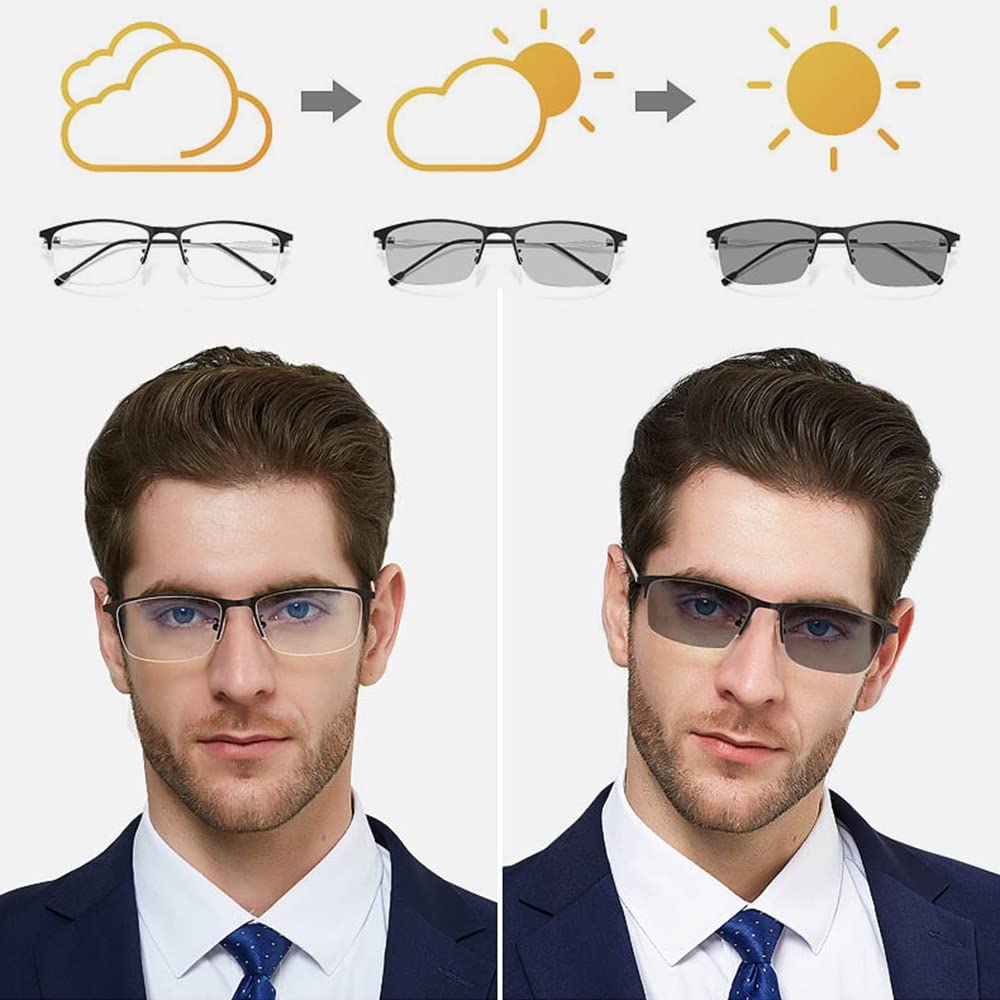
经过对photochromic progressive lenses(光致变色渐进镜片)核心功能、镜框设计和高级镜片选项的深入探讨,我们现在将总结关键考量因素,并为您提供寻找理想视觉解决方案的实用资源。在2025年,选择一副合适的自动变色渐进镜片,意味着拥抱先进科技带来的无缝视觉体验和全方位眼部保护。
Recap of Key Considerations
Prioritize Your Needs for Photochromic Progressive Lenses
选择最适合您的光致变色渐进镜片,首先要明确您的个人需求。这包括您的日常生活方式、可支配的预算以及具体的视力需求。例如,如果您经常在户外活动且对光线敏感,那么变色功能至关重要;如果您长时间使用电脑,那么渐进设计的中距离视野和防反射涂层将极大提升舒适度。
- 生活方式考量:评估您每天的活动,如是否经常驾车、长时间阅读、使用电脑或进行户外运动。这些因素将直接影响您对镜片变色速度、颜色深度、镜框耐用性和舒适度的需求。例如,对于活跃的户外爱好者,轻巧耐用的TR90或钛金属镜框,结合高度抗刮擦和UV防护的多焦点变色镜片是理想选择。
- 预算规划:光致变色渐进镜片因其复杂的技术和多重功能,通常成本高于普通单焦点镜片。明确您的预算范围,有助于在不同的品牌、材质和附加功能之间做出明智的权衡。记住,对眼睛健康的投资是长期的。
- 视力矫正需求:除了老花眼,您是否还有散光、近视或远视等其他视力问题?专业的验光师将根据您的精确屈光度,为您定制最匹配的渐进变色镜片处方,确保视觉矫正的精准性。
理解并优先考虑这些因素,是选择一副既能满足功能性又能兼顾舒适与美观的自适应渐进镜片的关键一步。
Importance of a Proper Fit for Progressive Lenses
镜框的舒适度和完美贴合对于渐进镜片的功能发挥至关重要。一副不合身的眼镜,即使配备了最先进的光致变色渐进镜片,也无法提供最佳的视觉体验。
- 光学性能:渐进镜片的设计要求其光学中心精确对准瞳孔,以确保远、中、近视区的平滑过渡和清晰度。不合适的镜框可能导致镜片位置偏移,从而影响其光学性能,产生眩晕感或模糊视区。
- 佩戴舒适性:长时间佩戴不合身的眼镜会导致鼻梁和耳朵的压迫感,引发不适甚至头痛。如前所述的弹簧铰链和优质镜框材质(如钛金属或TR90)能显著提升佩戴体验,确保多焦点变色眼镜即使全天佩戴也倍感舒适。一副合身且平衡的眼镜能够最大化变色多焦眼镜的益处,让您几乎感受不到它的存在。
- 耐用性考量:合适的贴合度也能减少镜框因受力不均而产生的变形或损坏风险,延长photochromic progressive lenses的整体使用寿命。确保镜框与面部轮廓相符,镜腿长度适中,是维持眼镜稳定性和耐久性的重要因素。
因此,在选购光致变色渐进镜片时,务必重视镜框的试戴体验,并寻求专业人士的调整建议。
Resources and Further Reading
Links to Reputable Websites for Photochromic Progressive Lenses
为了帮助您做出更明智的决策,以下是一些建议的资源,可供您进一步探索和咨询:
- 寻找专业验光师:对于光致变色渐进镜片,专业的验光和精确的佩戴调整至关重要。您可以访问如American Optometric Association (AOA) 或您所在国家/地区的同等专业眼科协会网站,查找附近的注册验光师或眼科医生。他们能够为您提供个性化的眼部检查和镜片推荐。
- 在线购买平台:如果您对光致变色渐进镜片已有明确了解,并且希望探索更多款式和价格选项,一些信誉良好的在线零售商提供了便捷的选购服务。例如,若您希望直接了解和选购我们讨论过的photochromic progressive lenses产品系列,访问https://www.mozaer.com/search?q=photochromic progressive lenses”>Mozaer的photochromic progressive lenses系列能帮助您快速找到适合您视力需求和生活方式的优质渐进式多焦点镜片。此链接旨在为您提供一个便捷的入口,直接浏览各种设计和功能选项,满足您对高品质多焦变色眼镜的搜索意图。
Encouragement for Further Research on Auto-Adjusting Lenses
选择一副完美的photochromic progressive lenses是一个个性化的过程。我们强烈建议您根据自己的特定需求和偏好进行额外的研究。
- 深入了解技术:随着科技的进步,新的镜片材料和涂层技术不断涌现。您可以查阅更多关于镜片折射率、像差优化设计、以及不同品牌光致变色技术(如Transitions®、Zeiss PhotoFusion®等)之间差异的资料,从而做出更专业的判断。
- 比较用户评价:阅读其他自适应渐进镜片用户的真实评价和使用体验,可以为您提供宝贵的参考信息。这些信息有助于您了解不同产品的实际表现,特别是关于变色多焦眼镜的适应期、清晰度和耐用性等方面的反馈。
- 咨询专业人士:最终,与您的验光师或眼科专家进行详细的沟通至关重要。他们能结合您的眼部健康状况、视力处方和日常习惯,为您提供最权威的建议,确保您所选的photochromic progressive lenses能够真正提升您的视觉质量和生活便利性。
Unlocking Optimal Vision: Your Guide to Photochromic Progressive Lenses
Navigating the world of eyewear can be complex, but understanding photochromic progressive lenses reveals a powerful solution for modern visual needs. This comprehensive guide has explored the multifaceted benefits and considerations of these advanced optics, which seamlessly blend multifocal vision correction with automatic light adaptation.
We first delved into the core concept of photochromic progressive lenses, highlighting their ability to provide clear vision across all distances – near, intermediate, and far – while dynamically transitioning from clear indoors to dark outdoors. This dual functionality eliminates the inconvenience of carrying multiple pairs of glasses, offering superior convenience and robust UV protection. The discussion underscored the importance of discerning between photochromic progressive and standard progressive lenses, particularly concerning their light-adaptive properties and associated costs.
Choosing the ideal pair involves several critical decisions. We examined various lens materials like polycarbonate, glass, and Trivex, emphasizing their impact resistance, weight, and clarity, alongside factors such as prescription strength and lens index which influence thickness. Selecting the right frame size and fit, especially with accurate pupillary distance (PD) measurement, was identified as paramount for optimizing the progressive lens zones and ensuring comfort.
Our review extended to top brands such as Transitions and Essilor, comparing their cutting-edge lens technologies, including polarization and anti-reflective coatings, which further enhance visual clarity and comfort. We also provided insights into purchasing options, contrasting online retailers like Zenni and Eyebuydirect with offline providers, considering aspects like pricing, virtual try-on tools, and return policies. Understanding the cost drivers, from lens material and brand to additional coatings and prescription complexity, empowers consumers to make informed financial decisions. Crucial maintenance tips, including proper cleaning and addressing issues like scratches and fading, were outlined to ensure the longevity and optimal performance of your investment.
The versatility of photochromic progressive lenses extends to specific activities like driving and sports. While windshield UV protection may affect their darkening in cars, they still offer significant glare reduction. For sports, careful consideration of impact resistance, clarity, and frame compatibility is essential to maximize their athletic utility. We also addressed potential drawbacks, such as minor color distortion or reduced light transmission in extreme conditions, and discussed the overall value proposition against alternative eyewear. Crucially, the eye health benefits, including enhanced UV protection and integrated blue light filtering capabilities, were emphasized, underscoring their role in safeguarding long-term ocular well-being.
In conclusion, investing in photochromic progressive lenses is a commitment to unparalleled visual freedom and eye protection. By prioritizing your specific lifestyle needs, ensuring a precise fit, and leveraging the diverse range of brands and advanced features available, you can find the perfect pair to elevate your daily visual experience. We encourage further exploration of cutting-edge technologies and consultations with eye care professionals to tailor your choice. For a comprehensive selection of high-quality photochromic progressive lenses, tailored to your budget and vision requirements, visit Mozaer at https://www.mozaer.com/search?q=photochromic progressive lenses and discover a clearer, more convenient future for your eyes.

Leave a Reply